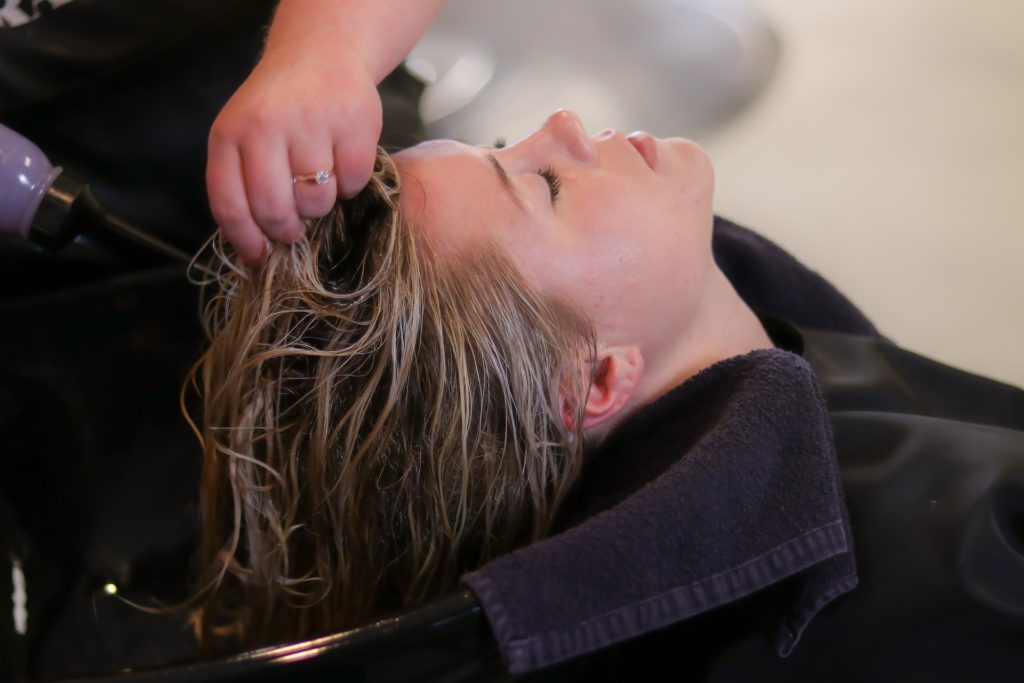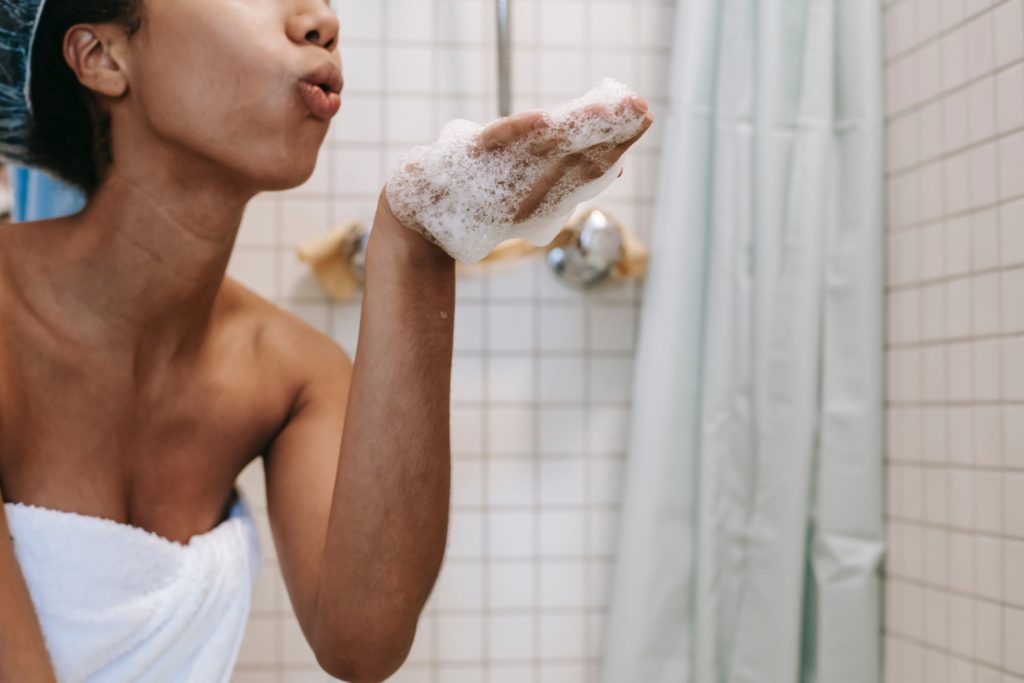
10 Questions On Shampoo & Conditioners for managing your hair
Q.1 Do we require to do daily shampoo .
The main purpose of shampoo is to cleanse the scalp. The shampoo is a cleanser designed to remove sebum, sweat, fungal elements, and environmental dirt from the scalp and hair. When you shampoo daily you are stripping of your hair of its much-needed sebum. Sebum helps to function as a lubricant to the hair follicles. Sebum helps nourishes your hair and keeps them moisturized. This helps in preventing hair damage due to friction and dryness. Sebum coats hair strands and protects the upper cuticle layer, giving your hair a smooth, soft feel.
Sebum has another side also if the sebum is not removed scalp allows the level of sebum trapped in the follicles to build up. Moreover, that sebum traps the grime and dirt collected from everyday life, eventually choking off the follicles and weakening the hair.
During rinsing massage the hair for at least 5 minutes with fingers on the scalp. This will help in maintaining the personnel hygiene, increased the flow of blood and removing any sediment or dust. A gentle massage is an excellent way to invigorate the scalp, which increases blood flow to the papilla and stimulates hair growth. Rinse with cool or lukewarm water. Advice: Do shampoo twice a week or thrice a week depending on weather and hair requirements.
O.2 .What are the basic shampoo formulation and their function in the shampoo?
| Ingredients | Key Function |
| Detergents | Remove environment dirt, styling products, sebum, and skin scale from the hair and scalp. |
| Foaming agents | This agent allows foam formation as consumers perceive the foam formation as a key character of shampoo. |
| Conditioners | Leave the hair soft and smooth after sebum removal by the detergent. |
| Thickeners | Thicken the shampoo, since consumers feel that a viscous product works better than a thin product. |
| Opacifiers | Added to make a shampoo opaque as opposed to for aesthetic looks not related to the cleansing effect. |
| Sequestering agents | They prevent soap scum from forming on the hair and scalp in the presence of hard water. The basic difference between a liquid shampoo and a bar cleanser. |
| Fragrances | An aroma that is acceptable to the consumer |
| Speciality additives | Ingredients or marketing aids added to impart other benefits to the shampoo besides hair and scalp cleansing |
Q.3. How many types of shampoos are available in the market.
There are four basic categories of shampoo detergents: anionics, catatonics, amphoteric, non-ionic and natural surfactants.
| Type | Characteristics | Class of chemical found |
| Anionics | Helpful in deep cleansing removes sebum making hair looks harsh and dry | Lauryl sulphates, laureth sulphates, sarcosine, Sulfosuccinates |
| Cationic | Poor cleansing, poor lather, impart softness and manageability | Long-chain amino esters |
| Non-ionic | Mildest cleansing, impart manageability | fatty alcohols , sorbitol esters. |
| Amphoteric | Nonirritating to eyes, mild cleansing, impart manageability | Betaines, sultaines. |
| Natural surfactants | Poor cleansing, excellent lather | Sarsaparilla, soapwort, soap bark, ivy, agave |

Q.4.Why conditioners is important.
While the main intent of a shampoo is to cleanse the scalp and hair it also removes the Sebum making the hairs harsh and dry. Hair that is completely devoid of sebum is harsh, difficult to style, and dull. Conditioners are used to improve the feel of the hair after shampooing so as to be smooth and moist. The conditioner functions to impart manageability, gloss, and antistatic properties to the hair. These are usually fatty alcohols, fatty esters, vegetable oils, mineral oils, or humectants.
Q.4.Type of conditioners and functionality they impart.
| Type | Main ingredient | Function it imparts | Benefit |
| Cationic detergent | Quaternary ammonium compounds | Smooth cuticle, decrease static electricity | Excellent for restoring damaged, chemically processed hair. |
| Film-former | Polymers | Fill hair shaft defects, decrease static electricity, improve shine | Improve the appearance of dry hair, improve grooming of coarse, kinky hair. |
| Protein containing | Hydrolysed proteins | Penetrate hair shaft to minimally increase strength | Temporarily mend split Ends |
| Silicones | Dimethicone, Cyclomethicone, amodimethicone | Thin coating placed on hair shafts | Decrease static electricity, decrease combing friction, add shine. |
Q.5. Protein conditioning agents and how they work.
Protein-containing conditioners are the most interesting and beneficial for hair protection and nourishment. They are popular conditioners for damaged hair since they can temporarily mend split ends, also medically known as trichoptilosis. With the passage of time hair loses its strength due to the removal of the cuticular scales and damage to the underlying cortex. This damage creates areas where the hair shaft contains holes. These holes create sites for the deposition of protein from a conditioner. Protein-containing conditioners can actually penetrate the damaged hair shaft and increase its fracture strength by 10%.
The ability of protein-containing conditioners to strengthen the hair shaft depends on contact time. The longer the protein conditioner is left in contact with the hair shaft, the more protein will diffuse into the shaft.The amount of protein that penetrates the hair shaft determines the final result. It is important that the protein is hydrolysed, as larger protein molecules cannot penetrate the hair shaft.
Q.6. Silicone hair conditioning agent has revolutionized the industry.
Silicone is the newest ingredient used in hair conditioners. Since silicone forms a thin, nongreasy film on the hair shaft, it does not create the dull appearance characteristic of other hair conditioning ingredients. Silicone is water-resistant, some silicone remains on the hair shaft after water rinsing to improve manageability by reducing static electricity, minimize tangles by decreasing friction, and impart shine by smoothing roughened cuticular scale.
Q.7.Why pH adjustment is important in shampoos.
Most shampoo detergents used in making shampoos have an alkaline pH, which causes hair shaft swelling. This swelling loosens the protective cuticle, leading the hair shaft to get damage in the process. Hair shaft swelling can be prevented by pH balancing the shampoo through the addition of an acidic substance, such as glycolic acid. Shampoos formulated at a neutral pH are most important for chemically treated hair from either permanent dyeing or permanent waving.
Q.8.Type of shampoos and properties which you should look for the selection of your shampoos.
| Type | Functions |
| Normal hair shampoo | They are designed to thoroughly cleanse the scalp and hair in persons with virgin hair and moderate sebum production. |
| Dry hair shampoo | These shampoos provide mild cleansing and good conditioning. |
| Damaged hair shampoo | Used for hair that has been chemically treated with permanent hair colours, hair bleaching agents, permanent waving solutions or hair straighteners. Hydrolysed animal protein is the superior conditioner for damaged hair since it can minimally penetrate the shaft and temporarily plug surface defects, resulting in hair with a smoother feel and more shine. |
| Oily hair shampoo | Oily hair shampoos have excellent cleansing and minimal conditioning properties. Following an oily hair shampoo with use of a heavy conditioner is not practical. |
| Everyday shampoo | Everyday shampoos are designed with minimal cleansing properties, since they are intended for everyday or frequent use. They are similar in formulation to dry hair shampoos, with minimal detergency and conditioning. |
| Deep cleaning shampoo | Deep cleaning shampoos are similar to oily hair shampoos in that they are formulated with surfactants selected for their excellent sebum removal qualities. These shampoos contain no conditioning agents and are designed to be used once weekly by persons who use large amounts of hairspray, styling gels, and hair waxes for grooming. |
| Baby shampoo | Baby shampoos are no irritating to the eyes and are designed as mild cleansing agents, since babies produce limited sebum. Baby shampoos are appropriate for mature hair and for individuals who wish to shampoo daily. |
| Conditioning shampoo | Conditioning shampoos, also known as 2-in-1 shampoos, intend to both clean and condition with one product. |
| Medicated shampoo | Medicated shampoos function to remove sebum, scalp scale, bacteria, and fungal elements from the scalp and hair. |
| Hair dying shampoo | There are special shampoos designed for use after permanent hair dyeing. These shampoos employ cationic surfactants and are formulated at an acidic pH. They are designed to neutralize any residual alkalinity from the chemicals used for hair dyeing. |
Q.9.How shampoos are designed.
There are many types of shampoo, each claiming to offer the consumer a unique benefit. Shampoos have been formulated as liquids, gels, creams, aerosols, and powders; however, the liquid formulations are the most popular.
In general, a shampoo consists of 30–40% anionic surfactants, about 10% amphoteric surfactants, 3–6% thickening agents such as alkanolamine and other non-ionic surfactants in most cases, and 0.3–1.0% cationic polymers to improve the feel of use and increase viscosity.
The sensory characteristics of shampoos are determined by the ratio between cationic polymers and anionic or amphoteric surfactants, and viscosity is also determined by the combination of these four ingredients. Stabilizers, preservatives, and acidity regulators are other important ingredients.
Shampoos function by employing detergents, also known as surfactants, which are amphiphilic. This means that the detergent molecule possesses both lipophilic, or oil attracting, and hydrophilic, or water-attracting, sites. The lipophilic site binds to sebum and oil-soluble dirt while the hydrophilic site binds to water, allowing removal of the sebum with water rinsing.
The most common shampoo detergents
- Sodium laureth sulfate
- Sodium lauryl sulfate
- TEA lauryl sulfate
- Ammonium laureth sulfate
- Ammonium lauryl sulfate
- DEA lauryl sulfate
- Sodium olefin sulfonate
Typically, several detergents are combined together to achieve the desired end result. For example, if the shampoo is intended for oily hair, detergents with strong sebum removal qualities are selected, conversely, if the shampoo is intended for permanently waved or dyed hair, mild detergents are selected to reduce sebum removal. The art of shampoo formulation is selecting the right detergent combination to cleanse the scalp and beautify the hair simultaneously.
Q.10. How hair composition helps in the formulation of shampoos and conditioners.
Hair is a non-living structure basically formed of protein. It is composed of keratin, which is formed from insoluble cysteine-containing helicoidal protein complexes. These protein complexes, which form 65–95% of the hair by weight, are extraordinarily resistant to degradation and are thus termed hard keratins.
Hair can be stretched to 30% of its original length in water and experience no damage, but irreversible changes occur when hairs are stretched to between 30% and 70% of their original length. In addition to undergoing stretch deformation, the hair shaft must also withstand repeated wetting and drying experienced as part of the hair cleansing process.
Another important physical characteristic of hair is the interaction between adjacent hair shafts in the form of friction. It has been shown that wet straight hair possesses higher combing friction than dry straight hair. Hence hair should not be combed when wet to avoid stretching the hair shafts to the brittle breaking point.